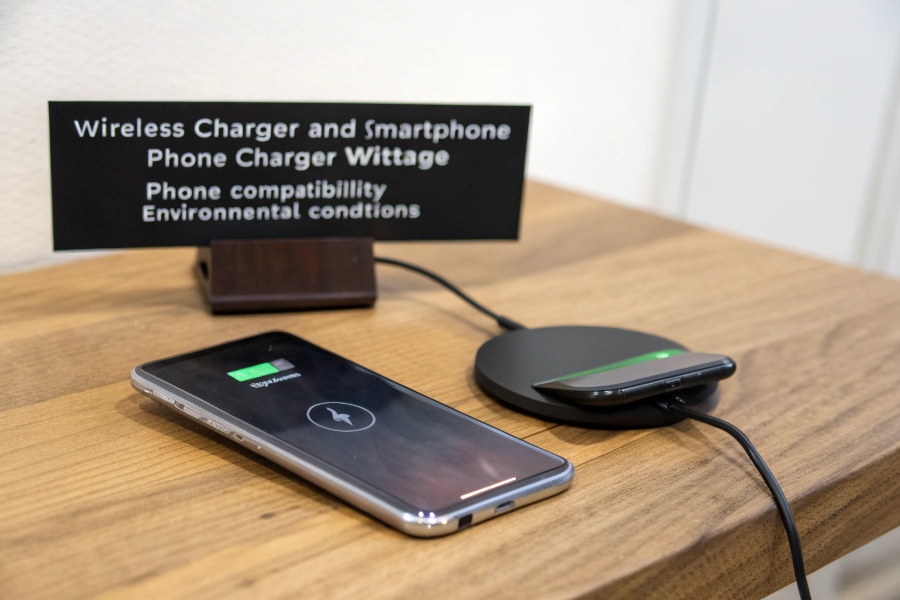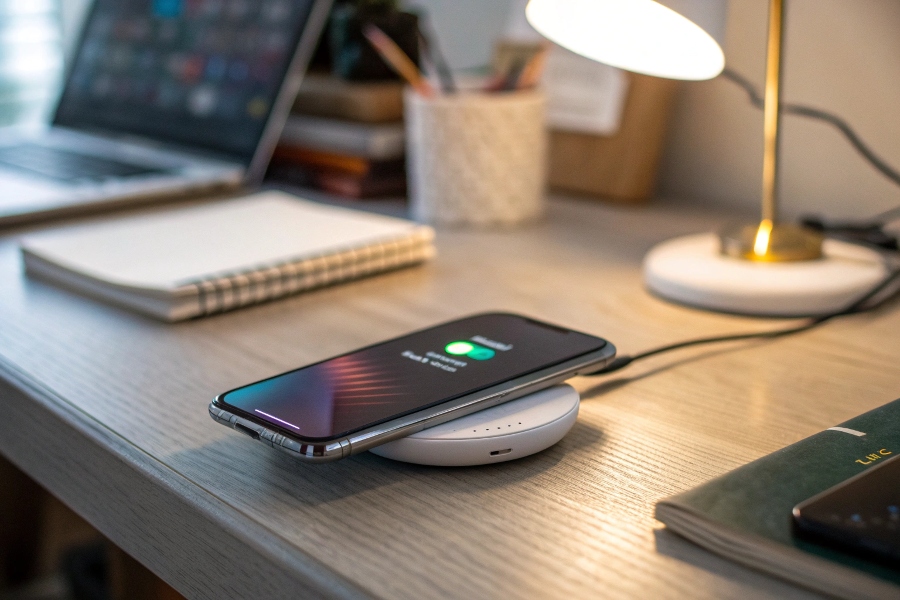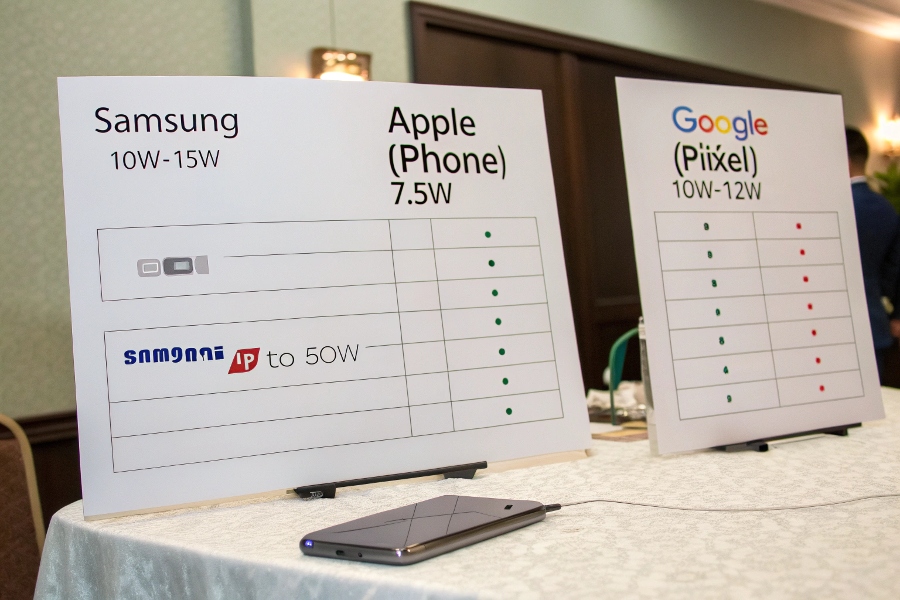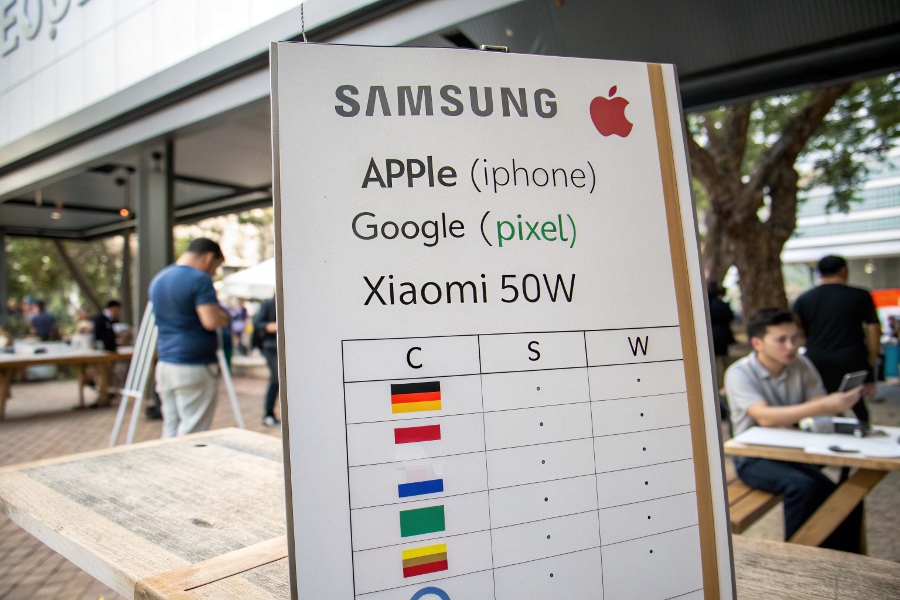Wireless charging is cool, but is it fast? Many people wonder why their wireless charger seems slow. Let’s explore what affects wireless charging speed
Wireless charger speed depends on several factors. These include the charger’s power output, the phone’s compatibility, and environmental conditions. Understanding these can help you get the fastest wireless charge possible.

You may want faster wireless charging. So, read on to learn how to improve it.
Is the Charger’s Wattage High Enough?
Wireless chargers have different power levels. Are you using the right one for your phone? A charger with low wattage will charge your phone slowly.
A wireless charger’s wattage directly impacts charging speed. Higher wattage chargers deliver more power. As a result, your phone charges faster. Check your phone’s specifications to find its maximum wireless charging capacity. Match your charger to that number for the best speed.

Dive Deeper:
Wireless charging wattage is measured in watts (W). Common wireless charging speeds include 5W, 7.5W, 10W, and 15W. Some chargers even go up to 30W or more. However, your phone needs to support these higher wattages to benefit from them. For example, an iPhone can only wirelessly charge at a maximum of 7.5W. Using a 15W charger won’t make it charge faster. The charger will only deliver the maximum power that the phone accepts. In reality, the charging speed may not be the nominal wattage. The actual charging speed is also determined by the efficiency of the circuit design, the material used in the coil, and the heat dissipation design. Good heat dissipation design allows the wireless charger to maintain a higher power output for a longer period of time.
Here’s a table to illustrate:
| Charger Wattage | Phone Support | Charging Speed |
|---|---|---|
| 5W | Yes | Slower |
| 7.5W | Yes | Standard |
| 10W | Yes | Faster |
| 15W | Yes | Fastest (if phone supports) |
Make sure your charger matches your phone’s needs for the best speed.
Does Your Phone Support Fast Wireless Charging?
Not all phones charge wirelessly at the same speed. Is your phone’s wireless charging up to date? Older phones might have slower wireless charging capabilities.
A phone’s compatibility with fast wireless charging is crucial. Some phones have hardware limitations. These limitations prevent them from taking full advantage of faster chargers. Check your phone’s specs to see its maximum wireless charging speed1. Use a charger that matches or is slightly higher than that speed for optimal performance.

Dive Deeper:
Phone manufacturers use different wireless charging standards. The most common is Qi (pronounced "chee"). However, even within Qi, there are different versions and capabilities. Some phones support faster Qi charging profiles. These profiles allow them to receive more power. For example, some Samsung phones support fast wireless charging up to 15W. iPhones, on the other hand, are typically limited to 7.5W. Also, some proprietary technologies exist. For example, Xiaomi has its own fast wireless charging tech that goes beyond the standard Qi. Always refer to your phone’s manual for detailed charging specifications. Knowing your phone’s limitations is key to setting realistic expectations for wireless charging speed.
Here’s a table summarizing common phone brands and their typical wireless charging speeds:
| Phone Brand | Typical Wireless Charging Speed |
|---|---|
| Samsung | 10W-15W |
| Apple (iPhone) | 7.5W |
| Google (Pixel) | 10W-12W |
| Xiaomi | Up to 50W (proprietary) |
Is Overheating Slowing Things Down?
Heat can affect charging speed. Is your phone or charger getting too hot? Overheating can significantly reduce wireless charging efficiency.
Overheating is a common problem with wireless charging. High temperatures can reduce charging speed. Phones and chargers have safety mechanisms. These mechanisms slow down or stop charging when they get too hot. Keep your phone and charger in a cool place. This will help avoid overheating and maintain faster charging speeds.

Dive Deeper:
Wireless charging generates heat due to energy loss during the transfer. This is especially true for fast wireless charging. The higher the wattage, the more heat is produced. Factors that contribute to overheating include:
- Ambient temperature: Charging in a hot room or direct sunlight can increase temperatures.
- Case: Thick phone cases can trap heat.
- Charger design: Some chargers have better heat dissipation designs than others.
To minimize overheating:
- Remove your phone case while charging.
- Place your phone and charger on a hard, cool surface.
- Avoid charging in direct sunlight or hot environments.
- Choose a wireless charger with a good heat dissipation design.
Here’s a table of tips to prevent overheating:
| Action | Benefit |
|---|---|
| Remove phone case | Allows better heat dissipation |
| Charge in a cool place | Reduces ambient temperature |
| Use a charger with heat dissipation | Helps dissipate heat more efficiently |
Conclusion
Faster wireless charging is possible with the right setup. Consider wattage, phone compatibility, and temperature. Then, enjoy a quicker, more efficient charge!
-
Understanding the factors that influence wireless charging speed can help you optimize your charging experience and efficiency. ↩
